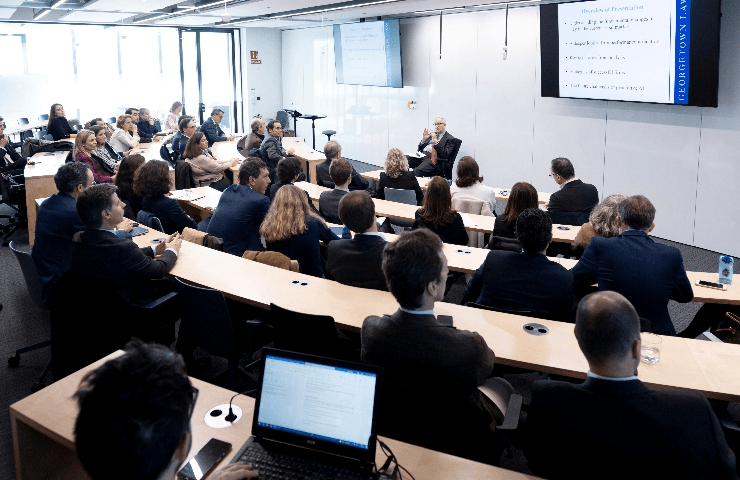James W. Jones, Senior Fellow at the Georgetown University Law Center, visited the LawAhead Center on the Legal Profession to present the findings of the recently published 2023 Report on the State of the Legal Market. He wasted no time endearing himself to those in attendance, praising the LawAhead Center for its work and sharing his delight in experiencing it in its inaugural year.
According to Jones, one can only understand the fundamental changes at play in today’s legal market through a thorough analysis of the last fifteen years. His report marks the 2007-2008 financial crisis as the point when latent shifts began to take hold, charting a course from that turbulent period, through a spell of relative stability, up to the volatility of the global pandemic. It was compiled using data from Thomson Reuters Financial Insights, which provides quarterly statistics on the performance of all firms in the market.
The last 15 years should be split into three blocks: the Great Financial Crisis, The Transactional Decade and Pandemic Volatility. As Jones explains, “The primary market change was a shift from a seller’s to a buyer’s market.” This transformation was characterized by a demand for value, measured by efficiency, cost-effectiveness and predictability—all things law firms had never concerned themselves with before.
Although its effects may not have been felt immediately, Jones argues, “They were absolutely irreversible.” Low interest rates defined the decade of stability that followed, driving transactional practices like corporate finance and M&As. This sustained law firm revenues, despite underlying market changes.
“AI is here to stay. People are already using it so we must learn how to use it intelligently.”
Resulting pressures were exacerbated by the global pandemic. Those firms that failed to adapt in the face of mounting competition have struggled far more than their counterparts. The report shows how different types of firms have dealt with the fallout. For instance, mid-sized and boutique firms have been hiring at much higher rates than Am Law 50, 100 or 200 firms, looking to grow their way out of the problem. That said, the approach has borne some fruit: these firms are now increasing their profits at much the same rate as the Am Law 100 firms.
Now, the latest challenge facing the legal market is the dawn of generative AI. “People overestimate how AI will change the world in the next two years but seriously underestimate how it will change the world in ten years—and I think that’s absolutely true in the legal market.” The pace of adoption of this new technology is unprecedented and it certainly promises to transform the way law firms work, forcing new pricing models and new leverage models and, ultimately, revolutionizing the legal market.
Established by IE Law School to provide legal professionals a platform to create a positive impact on society, the LawAhead Center on the Legal Profession boasts an impressive list of collaborators, including CMS, Cuatrecasas, Gómez-Acebo & Pombo, Garrigues, Pérez-Llorca, RocaJunyent, Sagardoy and Uría Menéndez.


